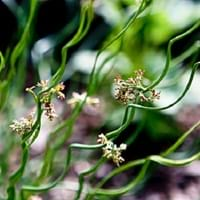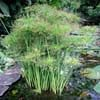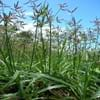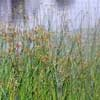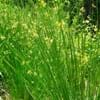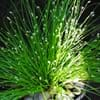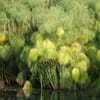What is
Life Span
Perennial
Perennial
Type
Sedge or Rush
Fruit, Palm or Cycad, Tree
Origin
World/Pandemic, North America, Europe, Russia/Siberia, Africa, Asia
Not Available
Types
not available
Not Available
Habitat
All sorts of environments, Banks, ditches, marshes, Shores of rivers or lakes
Humid climates, sandy seeps, shores, tropical environments
USDA Hardiness Zone
6-9
5-12
AHS Heat Zone
9-6
12-10
Sunset Zone
H1, 1a, 1b, 2a, 2b, 3a, 3b, 4, 5, 6, 7, 8, 9, 10, 11, 12, 13, 14, 15, 16, 17, 18, 19, 20, 21, 22, 23, 24
H2
Habit
Clump-Forming
Upright/Erect
Information
Plant Size
Minimum Height
45.70 cm
99+
2,900.00 cm
7
Minimum Width
61.00 cm
99+
700.00 cm
30
Plant Color
Flower Color
Brown
Yellow Brown
Flower Color Modifier
Bicolor
Bicolor
Fruit Color
Not Available
Green
Leaf Color in Spring
Green
Green
Leaf Color in Summer
Green
Golden Green
Leaf Color in Fall
Green
Green
Leaf Color in Winter
Green, Tan, Sandy Brown
Green
Shape
Leaf Shape
Long hair-like leaves
Pinnate
Thorns
No
No
Season
Plant Season
Spring, Summer, Fall, Winter
All year
Growing Conditions
Sunlight
Full Sun, Partial Sun
Full Sun, Part sun
Growth Rate
Fast
Fast
Type of Soil
Clay, Loam, Sand
Loam, Sand
The pH of Soil
Acidic, Neutral
Neutral, Slightly Acidic, Slightly Alkaline
Soil Drainage
Poorly Drained
Well drained
Bloom Time
Early Summer, Summer, Late Summer, Early Fall
Not Available
Repeat Bloomer
No
Yes
Tolerances
Drought
Salt
Care
Where to Plant?
Ground, Pot
Ground
How to Plant?
Divison, reseeds
Seedlings, Transplanting
Plant Maintenance
Medium
Medium
Watering Plants
Watering Requirements
Does not require regular watering
Reduce watering during fall, Water daily during growing season, Water frequently while growing
In Summer
Lots of watering
Lots of watering
In Spring
Moderate
Moderate
In Winter
Average Water
Average Water
Soil
Soil pH
Acidic, Neutral
Neutral, Slightly Acidic, Slightly Alkaline
Soil Type
Clay, Loam, Sand
Loam, Sand
Soil Drainage Capacity
Poorly Drained
Well drained
Sun Exposure
Full Sun, Partial Sun
Full Sun, Part sun
Pruning
Prune to control growth, Remove damaged leaves, Remove dead branches, Remove dead leaves
Cut limbs, Remove dead branches
Fertilizers
All-Purpose Liquid Fertilizer
Nitrogen, Phosphorous, Potassium, slow-release fertilizers
Pests and Diseases
Not Available
Bud rot, Cadang-cadang, Coconut bug, Coconut foliar decay, Coconut scale, Ganoderma butt rot, Gray leaf blight, Lethal bole rot, Lethal yellowing, Mealybugs, nutfall, Red ring nematode, Stem bleeding disease
Plant Tolerance
Drought
Salt
Facts
Flowers
Insignificant
Yes
Flower Petal Number
Single
Single
Fruits
Showy Fruit
No
Yes
Edible Fruit
No
Yes
Fragrance
Fragrant Flower
No
No
Fragrant Fruit
No
No
Fragrant Leaf
No
No
Fragrant Bark/Stem
No
No
Showy Foliage
Yes
Yes
Showy Bark
No
Yes
Foliage Texture
Fine
Fine
Foliage Sheen
Glossy
Matte
Evergreen
No
Yes
Invasive
Sometimes
No
Self-Sowing
Yes
No
Attracts
Bumblebees, Flying insects
Not Available
Allergy
Unknown
Abdominal pain, Anaphylaxis, cramps, Mouth itching, Nasal Congestion, Nausea, Runny nose, Skin irritation, Throat itching
Benefits
Uses
Aesthetic Uses
Informal Hedge, Woodland margins
Beautification, Landscape Designing, Showy Purposes
Beauty Benefits
Not Available
Good for skin, Good for the Scalp, Hair Conditioner, Heals Damaged Hair, Makes Hair Silkier, Making cosmetics, Removes dandruff, Restores Hair Colour
Edible Uses
No
Yes
Environmental Uses
Air purification
Air purification, No fertilizer, pesticides, or herbicides needed, Wildlife
Plant Benefits
Medicinal Uses
Not Available
Antibacterial, anti-cancer, Antifungal, Antioxidants, Antiviral, Digestion problems, Heart problems, Immunity, Skin Disorders, Weight loss
Part of Plant Used
Not Available
Whole plant
Other Uses
woven into the covering of tatami mats
Air freshner, Animal Feed, Application in Furniture, Application in Handicrafts, For making oil for cosmetics, Oil is used for aromatherapy, Traditional medicine, Used as a nutritious food item, Used as a vegetable oil
Used As Indoor Plant
No
No
Used As Outdoor Plant
Yes
Yes
Garden Design
Bog Garden, Container, Mixed Border, Water Gardens
Edible, Feature Plant, Fruit Tree, Landscape, Tropical
Scientific Name
Botanical Name
JUNCUS effusus f.Spiral
Cocos nucifera
Common Name
Curly wurly
Coconut Palm, coconut tree
In Hindi
Corkscrew Rush
नारियल का पेड़
In German
Corkscrew Rush
Kokospalme
In French
Corkscrew Rush
Cocotier
In Spanish
Corkscrew Rush
El cocotero
In Greek
Corkscrew Rush
καρύδας δέντρο
In Portuguese
Corkscrew Rush
Coqueiro
In Polish
Corkscrew Rush
Drzewo kokosowe
In Latin
Corkscrew Rush
dolor ligno
Classification
Kingdom
Plantae
Plantae
Phylum
Magnoliophyta
Magnoliophyta
Class
Liliopsida
Liliopsida
Order
Poales
Arecales
Family
Juncaceae
Aceraceae
Genus
Juncus
Cocos
Clade
Angiosperms, Commelinids, Monocots
Angiosperms, Commelinids, Monocots
Tribe
Not Available
Cocoeae
Subfamily
Not Available
Arecoideae
Number of Species
Not Available
Not Available
|
||
|
||
|
